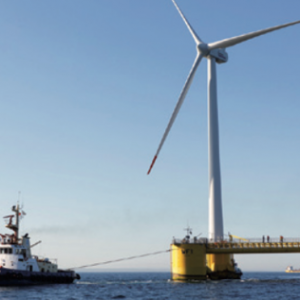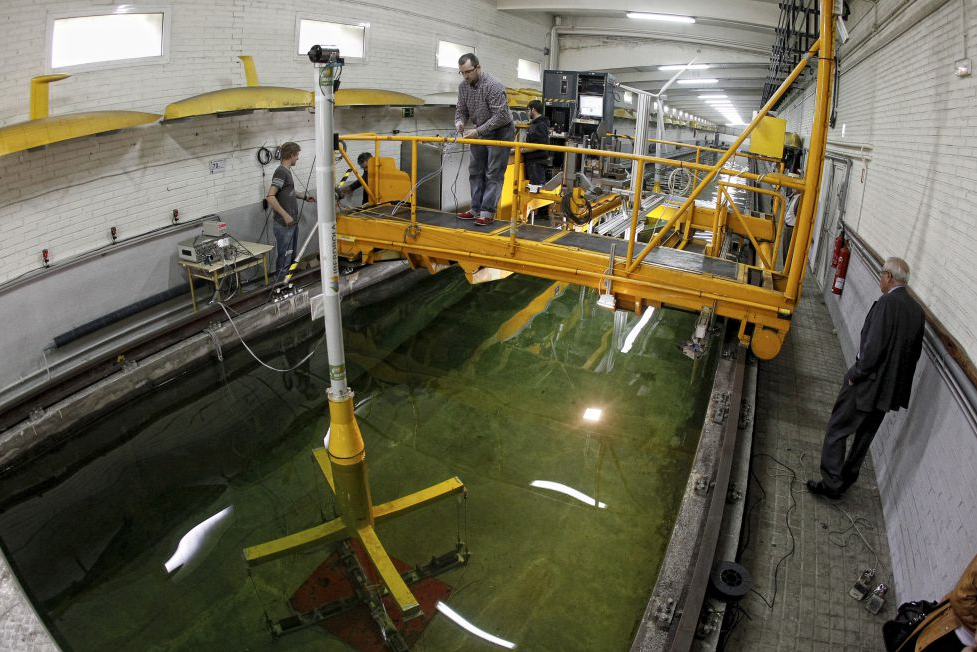The CEHINAV Research Group is a research and technology transfer structure (people and equipment). Its core is the Hydrodynamic Testing Channel at the Higher Technical School for Naval Engineers at the UPM and its work and projects are focussed on the hydrodynamics of floating artefacts (ships, platforms and devices for generating renewable energy, etc.) from and experimental and numerical point of view.
Site card
CEHINAV (Hydrodynamic Testing Channel at the HTSE for Naval engineering)
CEHINAV
Structure: Research Groups
Email: Infrastructures:
Our work focusses on hydrodynamics, from an experimental and numerical point of view. The group's lines of research are:
- Analysis and optimisation of ship hull forms, with numerical and experimental studies of behaviour at sea.
- Ship stability when intact and after breakdowns.
- High performance sports boats.
- CFD development applied to ship hydrodynamics.
- Numerical and experimental studies of hydrodynamics in marine devices and platforms for renewable energy, as well as oil and gas.
- Computer and experimental simulation of the "sloshing" phenomena.
- Passive stabiliser tank studies.
-
Advanced management of in-port risks
- Acoustic generated by marine propellers
- Antiroll tank design, test and modelling.
- CFD developments applied to ship hydrodynamics
- Design and optimization of port and offshore operations. Advanced environments of data analysis and visualization, based on Knowledge Based Systems and BigData
- Development of non-intrusive and low cost sensors
- Hydrodynamics os Sailing and Recreational Boats
- Intact and damaged Stability of Vessels
- Risk management in the maritime and port areas. Improvement of small scale modeling techniques.
- Seakeeping Analysis Tools
- Seakeeping on renewable energy devices, including wind turbine platforms
- Ship hull optimization by experimental tests
- Sloshing phenomena: Numerical, computational and experimental sutdies
In the experimental field, since 1988 our group has taken part in more than 250 projects under article 83 of the Universities Act. These projects relate to work ordered by public and private companies in Spain and internationally.
The CEHINAV has been a member of the International Towing Tank Conference since 1990, and has taken active part in the Technical Committees for Drag and Flow and Uncertainty of measurements and in the Quality Committee. It is also a member of the Standing Committee at the STAB Conference on ship stability.
Our Quality Management system is certified by the entity LGAI Technological Center, S.A., under number EC-4738/09 in accordance with the requirements of the ISO 9001:2015 standard. We are also a part of the Community of Madrid Laboratories Network, registered under number 226, with recognition at the highest level, 5, "External Recognition", on 25 October 2010.
Within our work, we provide many services including: academic work, software consultancy and development, tests with models, model construction, passive stabiliser tanks and sea testing. We also have the most modern facilities and equipment.
Download highlights of our projects here.
The following are among the equipment and facilities that the CEHINAV has to carry out its experimental campaigns:
- ARES CMS 5 axis machining centre.
- Testing channel (Length: 100m; width: 3.8m; depth: 2.2m).
-
Model tow (Max. speed = 4 m/s)
- Wave Generator (Regular/Irregular)
- National Instrument/Labview data acquisition system.
- FESTO actuator-forced oscillation system.
- Optical movement tracking system (Optical Tracking Tools - Optitrack).
- Laser PIV system (Particle Image Velocimetry).
- Sloshing laboratory.
- Passive stabiliser tank laboratory.
In the computational field the CEHINAV has extensive experience in simulation with the following codes as well as having its own cluster:
1. Seakeeping: ANSYS-Aqwa
2. CFD: Star-CCM+, Open-FOAM
3. Own code: AQUAgpusph (simulation of sloshing phenomena).
The CEHINAV, with the Environmental Hydraulics Institute a the University of Cantabria and the Rovira i Virgili University, jointly organised the OMAE, International Conference on Ocean, Offshore and Artic Engineering promoted by ASME (American Society of Mechanical Engineers) in Madrid in June 2018.
The following are among the most noteworthy projects the CEHINAV has taken part in or is currently part of:
- "Aerodynamic upgrade of Surface Air Cooled Oil Cooler (SACOC)." European Commission. H2020 - Clean Sky. 2019 [3 years].
- Sloshing Wing Dynamics (SLOWD)." European Commission. H2020 Programme. 2019 [3 years].
- "Circular Economy Network of Ports (LOOP-Ports)." European Commission. Climate-KIC Holding. EIT SGA 2018. 2018 [3 years].
- "Adaptation and implementation of floating wind energy conversion technology for the Atlantic region (ARCWIND)." European Commission, Interreg Atlantic Area Program. 2017 [3 years].
- "Demonstration of the GRAVI3 technology ¿innovative gravity foundation for offshore wind (DEMOGRAVI3)." European Commission, H2020 Program. 2016 [3 years].
- "Innovative Methodologies and technologies for reducing Aircraft Noise Generation and Emission (IMAGE)." European Commission, H2020 Program. 2015 [3 years].
- "Achieve Quieter Oceans by shipping noise footprint reduction (AQUO)." European Commission, FP7 Program. 2012 [3 years].
- "Greening of surface transport through an innovative and competitive CARGO-VESSEL (EU-CARGOXPRESS)." European Commission, FP7 Programme 2009 [3 years].
- "Superior Life Operation of Ship Propellers (SUPERPROP)." European Commission, FP6 Programme. 2005 [3 years]. (Coordinator).
Showing all 3 results
-
Efficiency and reliability in scale-model testing for the offshore industry. Dynamic control system for optimising execution and the cost of determining anchoring and mooring measurements…
-
Experimental studies of the hydrodynamics of ships and offshore platforms.







